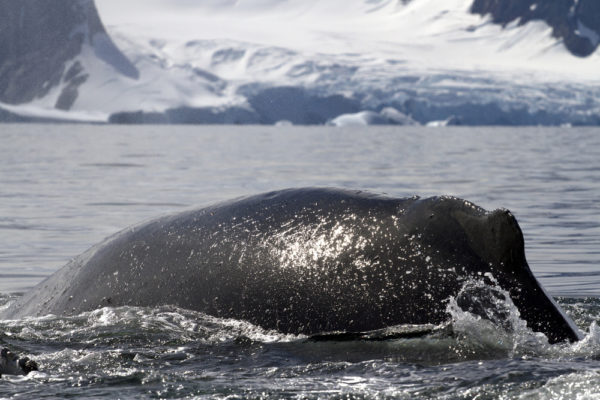
Article: 14 Interesting Humpback Whale Facts – Scuba Divers and Snorkelers (I actually have 17 facts)!
One of the greatest and wildest dreams for divers, snorkelers and whale-watchers is to watch gigantic ocean acrobatic humpback whales.
People travel all over the world to see these magnificent creatures thrust their body high above the surface of the water and go back underwater making a powerful splash.
At that very moment you get an adrenaline rush and the only intelligent thing you can say is ‘ooohhh’, ‘wow’, ‘did you see that’… and of course you want an encore!
In this article, I’ll tell you some interesting facts about the humpback whales, their habits, their way of communication, their social skills and much more. I also have a couple of great videos I know you will enjoy watching.
My Story
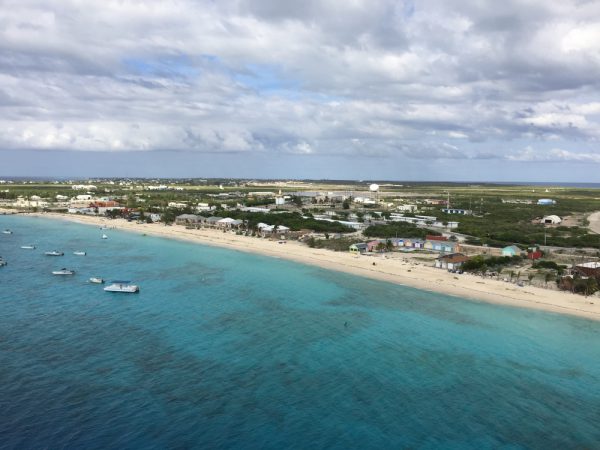
In 2005, I made my first trip to Grand Turk, Turks & Caicos Islands and it was there during one of my dives that I heard loud eerie sounds echoing.
I kid you not, it literally brought tears to my eyes. For years, I wanted this opportunity to hear and see them.
They sounded like moans high and low, some chirping, grunts and high notes. I did a 360, even swam out past the wall out into the blue abyss and still, there was no sign of them.
But, I got to listen to their entire song for the duration of the dive.
I became an ‘island girl’ and lived on the island for 4 1/2 years. Every year from January thru March, I got to spend time with the acrobatic humpbacks whales.
I was going to save this video produced by National Geographic for later but decided to share with you now so you can understand the magnificence of humpback whales.
A couple of days after, I had just finished another dive with my buddy and was sitting on the dive boat.
Suddenly about 60’ away, a massive humpback whale suddenly emerged and then a calf surfaced too, each both blowing air out of their blowholes. They disappeared just as fast as they emerged. You can imagine what we were thinking as we instantly stood up, hoping to see more performances.
For the next 5 minutes, we were in our glory, the mother and the calf would give us incredible entertainment by repeated powerful body thrusts high into the air, a huge splash and disappear again. We couldn’t ask for anything better!
Interesting Humpback Whale Facts
1) Identifying The Humpback Whales
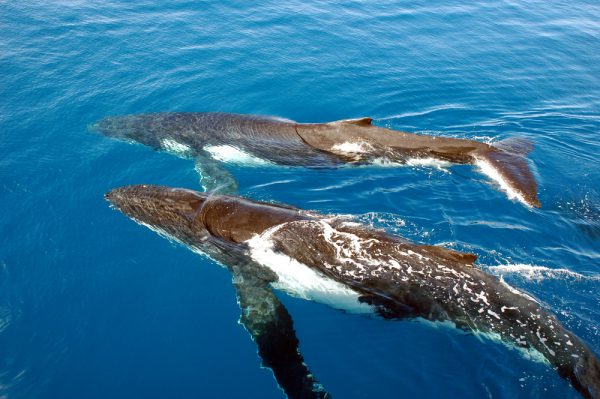
The Humpback Whales are graceful and strong swimmers.
As part of the baleen whale species (Megaptera novaeangliae) they belong to the ocean-dwelling mammals. The whales are called ‘humpbacks’ because their back has a noticeable small hump on their back in front of their small dorsal fin.
You can recognize them as having a very round, and broadhead which is covered with nodules (knobs).
Their upper dorsal side is black with white speckles on their underside. Along their ventral, they have pleats running under the tip of their lower jaw down to their lower belly. This helps them to scoop a mouthful of food and gulp them.
The interesting dorsal fin and tail fluke which is located on their back, are like human fingerprints. Scientists can easily identify each one because of their unique shape and color design on them.
Humpback whales are well known to have very impressive pectoral fins measuring as long as 15’.
Their massive and powerful tail fluke is long and can measure to a third of its body length.
2) Finding The Humpback Whales
According to NOAA Fisheries, humpback whales are the winners when it comes to long distance swimming.
They can migrate as far as 3000 miles/5000km from their breeding zone to their feeding zone and the longest ever recorded distance was 11,706 miles/18,840 km. Can you imagine what a long distance trip from American Samoa to the Antarctic Peninsula is like?
You can find the humpback whales pretty much all over the world but it really depends on the season. In the summer, many of them swim long distances to be in colder water like the Gulf of Alaska or the Gulf of Maine.
In the winter, they migrate back to warmer waters in Hawaii, South America, Africa, Mexico, Australia, Indonesia, places in the Caribbean like Turks & Caicos Islands, Bahamas and really anyplace where there is warm ocean water.
With the exception of the Arabian Sea, the humpback whales are year-round residents there but their numbers are fast decreasing. Their entanglement in fish nets, hits from large ships, and water pollution from increased land development has taken its toll on them.
3) Humpback Whales Communicate With Each Other
Humpback whales use different methods of communicating to each other based on their situation according to researchers.
One of the ways to communicate is by making sounds (music) because sound travels 4 times faster underwater than in air.
The other way for them to communicate is by their acrobatic and aerial stunts they perform above and below the surface. For instance, the breaching, ‘pec’ slapping and the tail slapping are methods of communicating with each other.
4) Pec Slapping or Pectoral Fin Slapping
If you’re on a whale watching excursion or sitting on a dive boat during your surface interval, you might be fortunate to see a humpback whale swimming casually at the surface on its side.
It’s exciting to watch a whale floating at the surface on its back. It exposes its belly and gently glides as it uses its pectoral fins to swim backward much like a swimmer swimming on his back.
Each pectoral fin is slowly lifted high into the air and as it goes back the fin crashes back into the water with a mighty splash and a loud noise.
They can slap their pectoral fins simultaneously, individually, one after the other causing loud noises and a tumultuous spray of water everywhere.
If they’re in a courting mood, some females will flirt and slap their pectoral fins in a sexually stimulating way to attract a male or if it’s among several males.
Humpbacks have been observed to slap their pectoral fins down harder at the surface when the wind picks up just to be noisier.
5) Humpbacks Are The Breaching Champions
I love this video…
If you haven’t seen a humpback whale breach before your eyes, this my friend is an absolute must.
A treasured memory you will never forget and you will talk about this experience ‘forever’. At least for me, I still haven’t stopped talking about their breaching. BUT… you have to be there at the right moment and the right time to see it happen.
Breaching is when the whale thrusts its body upward with such amazing force that either part of its body will be out of the water or entirely out of the water. No other whale can breach so wondrously to perfection as the humpbacks.
If you see them breach once, chances are you may see them breach again in a few minutes so stay ‘tuned’.
What are they trying to say to each other when they breach? No one really knows yet. According to scientists, it seems breaching is a method to communicate long distance as far as 4 km to other humpbacks who respond back with a breach.
6) Tail Slap (Fluke Slapping)

This is when the humpback whale raises its tail flukes out of the water and forcefully slaps it down hard, back on the surface of the water.
The slapping makes a loud thunderous noise that can be heard a long ways away and the spray of water can be seen a long distance. The slapping is repeated… slap, splash, slap, splash. Perhaps it’s a warning to other humpbacks close by.
7) Humpbacks Make Beautiful Music!
For some of you, it may not be music to your ears, but humpback whale songs even though they sound like groans, moans, and squeals, have earned the name ‘Songster of the Seas’.
Their songs have been recorded underwater and sold out at music stores. Many people find the whale sounds therapeutic and peaceful.
Truly one of my most delightful moments underwater is to hear them when I’m diving. Apparently, the whales can be as far away as 20 miles/30km.
It’s the mature male humpbacks, some divers call them the ‘men’s choir’, that do all the singing. They can sing for hours. Each pod having their own different music. Scientists recently discovered even the young males participate as a way of learning the music notes and intensifying their song.
The most common explanation from scientists is the males do all the singing mainly to lure the females and of course there’s always the competition. The louder the males sing, it seems to get the females attention even more.
The males also sing when they’re accompanying the female and her new calf … it must be in celebration of the newborn I think!
Quite often, with the same pod, the males will change their music by making some variations to them. Perhaps the females get bored easily. As time goes by, the males in the pod compose a new song and it’s repeated over and over until they get tired of it.
Studies have shown when whales go to other locations, they change their songs to match other whale songs in close proximity. They can use their songs to find locations and distances of other whales.
8) Humpbacks Have Blowholes
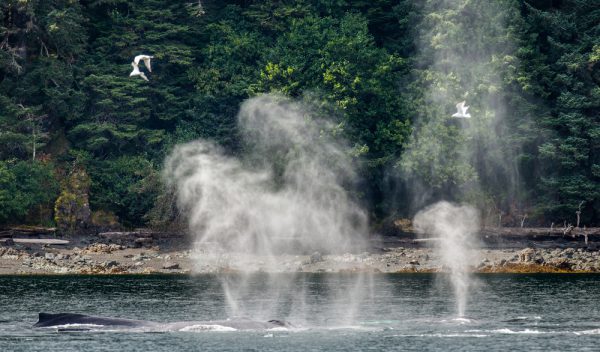
Like any underwater mammals, the humpbacks need to breathe air into their lungs and the only way they can do this is to breathe thru their blowholes.
The blowholes have flaps that are full of muscles to prevent water from entering their blowholes when they’re underwater.
When you see a humpback whale at the surface spewing out an explosive blast of a wet stream of misty air, the whale is exhaling air (‘the blow’).
It’s quite impressive when you see it go as high as 20’ into the air through its 2 blowholes (nostrils). If you happen to get close you can see them located side by side on the top of the back of its head. Immediately after exhaling, it inhales fresh air and the flaps close again.
9) Mother Humpbacks Care For Their Young
It may be a long time, in fact, months, before the mother humpback gets a meal. She is busy protecting her calf from the male humpbacks who want access to the mother and predators.
She must train her baby calf to swim, learn the acrobatic techniques and protect itself. Even baby humpbacks need to surface to breathe air. As soon as the mother delivers her calf, she immediately and gently guides it to the surface of the water so it can take its first breath of air.
The next thing the calf needs to do is to start eating. It’s not able to properly absorb the milk from the mother because its ‘lips’ are too rigid and it can’t get a good suction on the mother’s nipple.
Fortunately, Mother Nature has solved the problem. The calf has flaps that interlock on either side of its tongue. The mother shoots the rich yogurt-like milk into the calf’s mouth. The calf curls its tongue and absorbs the milk in.
As the calf gets older and no longer needs to nurse, the interlocking flaps are no longer needed and disappears. After about a year, the calf is old enough to be on its own unattended by the mother.
10) Humpback Are The Best Bubble Net Fishing Hunters
Humpback whales are like the gentle whale sharks and the giant manta rays because they are all filter feeders and so they don’t have teeth.
The humpbacks have overlapping baleen plates, approximately 270 – 400 plates that are composed of flexible keratin material. It’s the same material that makes up our hair and nails.
When you watch them feed, you might even see their black long 30″ plates. This is how they filter their prey after gulping a mouthful of water.
Humpback whales are seasonal filter feeders and feed on crustaceans like small copepods, tiny 2” shrimp-like krills and small fish like herring, sardines, and mackerel.
Their favorite gourmet meal is the thick rich plankton soup.
An averagely sized humpback will consume at least 2000kgs/4400lbs or more of plankton and small fish, eating twice a day. To stock up on their food, they make it worthwhile in the summer to journey long distances to cold water in search of more abundant meals.
Once they’re in cold water, their food hunting strategy begins with the ‘Bubble Net Fishing’.
First, it starts with a small pod of humpbacks and their mysterious haunting song begins. The plan is to work together and gather in a windfall of swirling food.
The lead female humpback starts first, taking the lead to hunt for food.
The rest of the whales follow behind and like synchronized swimmers they go in formation, each performing the same position in every lunge.
Once the leader finds a cluster of swirling food, she signals by blowing a net of bubbles encircling the food near the surface.
One whale calls to gather the others to also blow bubbles in the same circle. The swarm of food becomes confused by the eerie sounds and blinding bubbles that they dare not swim past the fizzling bubbles.
Now all the humpbacks have to do is simply open their mouth and gulp.
11) Humpback Whales Have Predators
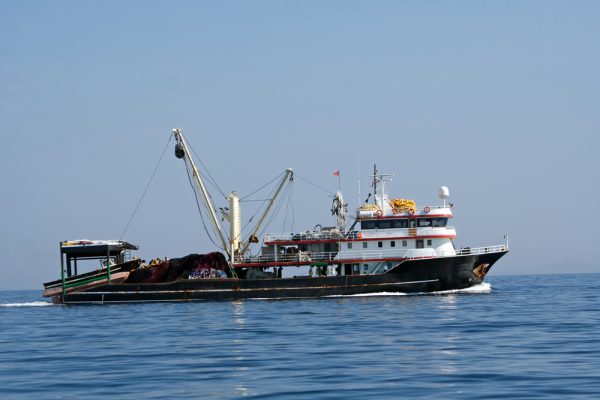
Humans have been the worst predators for the gentle humpback whales in the 20th century because of commercial whale fishing.
An estimated total humpback whale species according to scientists say their survival number leaves a mere 10% of the original worldwide humpback population.
Protection measures are being put in place in many parts of the world but there is still much work to be done.
Even now, the humpbacks that hang out close to shore can be hurt or killed by passing boats, pollution and fish net entanglement and left to drown. Today, it’s estimated the whale population is only around 80,000.
If they don’t die of natural death, the pods of killer whales (orcas) are the humpbacks natural underwater predators.
Working as a team, the killer whales try to separate the mother from the calf. Some observations show the mother lifting her calf on her back or on the back of her head.
It’s sad to watch… the mother struggles to hold her calf up to the surface so it can catch a quick breath of air. At the same time, the killer whales ram the mother’s body weakening her. The only way the humpback mother and her calf can survive is to hopefully swim closer to shore, something the killer whales don’t do.
12) How Long Can Humpback Whales Stay Underwater?
Calves need to rise to the surface to breathe air every 3-5 minutes.
An adult humpback, on average, will take a breath every 10 – 15 minutes.
13) What’s With The Barnacles On Humpback Whales?
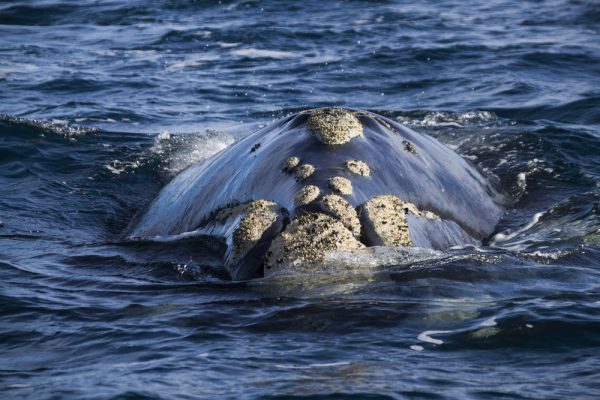
I’ve always been curious to find out why humpback whales have barnacles on them. I mean really? How do the barnacles even latch onto the whales let alone find the whales?
If you have that awesome opportunity to see a closeup of an adult humpback whale’s head, it looks like some ugly growth on it and sometimes it’s on their tail.
The growths are freeloading barnacles and the whales can host as many as 1000 lbs of colonizing barnacles on their bodies. You might think it’s a heavy burden on them but the humpbacks are already huge. For them, it’s like wearing an extra jacket in the summer.
For years, scientists have been studying humpback whales. It’s still a mystery as to how the barnacle larvaes find the whales. Some barnacles are even picky as to which humpback they want to hitchhike with, and for the Coronula Diadema barnacle, they prefer only the humpback whales.
What’s known is, humpback whales and barnacles have one meal in common..plankton. It’s possible that when the whales swim thru plankton soup, the shell-less barnacle larvaes are cruising there too. All they have to do is extend their feathery sticky arm and now the humpback has a hitchhiker.
14) The Life Expectancy Of Humpback Whales
Although scientists are unable to estimate the whale’s age because they don’t have teeth, there is speculation they could possibly have a life expectancy of 50-80 years.
15) How Many Calves Can The Female Humpback Have?
The female humpbacks mature around 5 – 7 years of age and can have many male partners during the mating season and so their chances of conceiving are quite high. The mature females will usually have a calf every 2 or 3 years and spend about a year totally devoted to feeding and training her young.
16) Do Humpback Whales Sleep and Rest?
Humpback whales similar to the dolphins sleeping habits are extremely intelligent. Researchers believe they can let half their brain sleep so that they can remember to breathe and still stay alert for predators.
Some humpback whales have been observed to be sleeping upside down almost vertically with their tail slightly exposed at the surface. Others have been seen to sleep horizontally like a log either on the surface or just below the surface.
17) Humpback Whales Are Really Sociable

Humpback whales are definitely sociable. They communicate with one another within their pod and other pod groups.
Not only will they come and swim close to your boat, they will let you watch their behavior underwater with their calf as long as they don’t feel threatened by your presence.
Mothers are very protective of their young so you don’t want to be too close.
Did you know that If the mother can’t produce enough milk or dies, another mother of the pod will step in?
Although there are more females in the pod with just a couple of males, they still hunt and migrate together as pods.
Are you ready to see some Humpback Whales?
There are many places to dive and snorkel with humpback whales so it really depends how far you want to travel and of course the season.
In my opinion, if you want the best experience in tropical weather to see humpback whales, I would say book with a liveaboard in the Turks and Caicos Islands.
Each year, the majestic Humpback Whales make the long journey from the north to migrate to Silver Banks, and Turks and Caicos Islands located east of Florida USA.
It so happens that West Caicos, Grand Turk, and Salt Cay happen to be right smack in the middle of the migrating humpback whales travel route. They enjoy the warm waters here and it’s perfect to mate and have a nursery.
Divers and snorkelers come from all over the world to hear these humpback whales sing and watch them perform their aerobatic stunts.
I have 2 liveaboards here for you to check out. One is for divers and the other is for snorkelers.


Turks and Caicos Explorer II Turks and Caicos Aggressor II
For divers
Recommended Liveaboard For Divers: Turks and Caicos Explorer II (7 nights)
Recommended Certification: Open Water Dive Certification and up. Perfect for novice and advanced divers.
Best Time To Go: Late January thru April
Port Of Departure: Providenciales
Itinerary: Turks and Caicos
Featured Sea Creatures: Humpback whales, hammerhead sharks, tiger sharks, reef sharks, manta rays and lush exotic corals
For Snorkelers
Recommended Liveaboard For Snorkelers: Turks and Caicos Aggressor II (The World Famous Silver Banks Humpback Whales Snorkeling Excursion)
Excellent for anyone who wants to snorkel with the friendly giant whales. Silver Banks is located north of Dominican Republic and is recognized as a marine sanctuary to protect the females and her young as well as to give birth. They remain here until the calves are strong enough to make their journey north.
NOTE: It’s best to book well in advance.
Best Time To Go: (late January thru April)
Port of Departure: Ocean World Marina
Itinerary: Silver Banks Humpback Whales Excursion
Featured Sea Creatures: Humpback Whales
What’s your experience with Humpback Whales? Do you have any great stories you would like to share or have any questions or comments? I really would like to hear from you.
Thanks for reading!
Monica
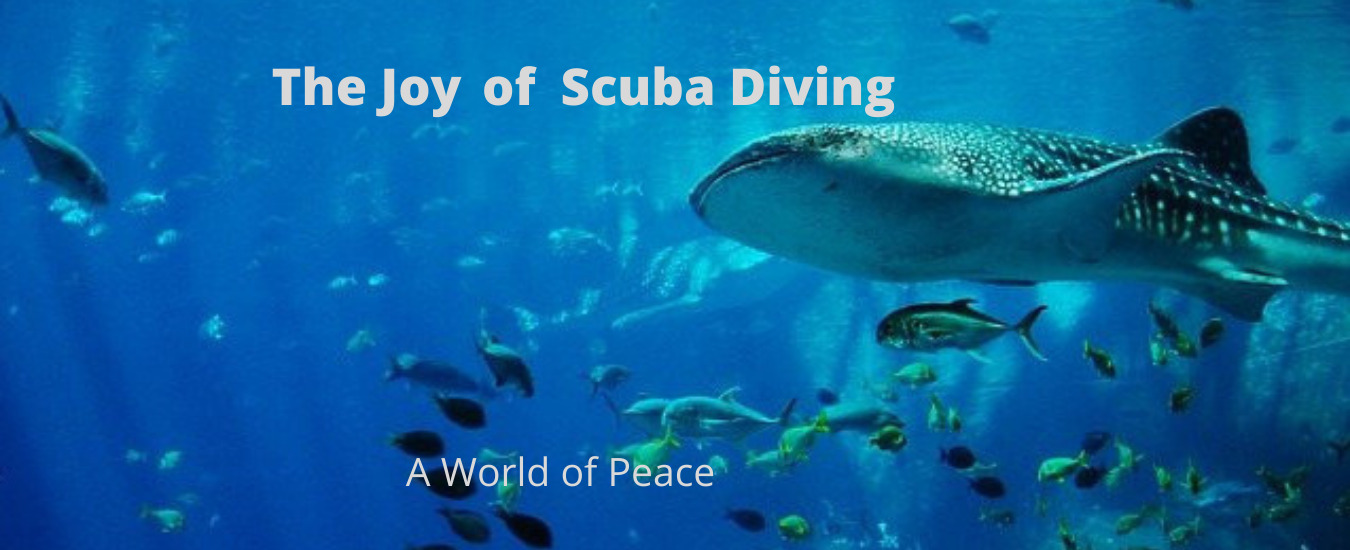
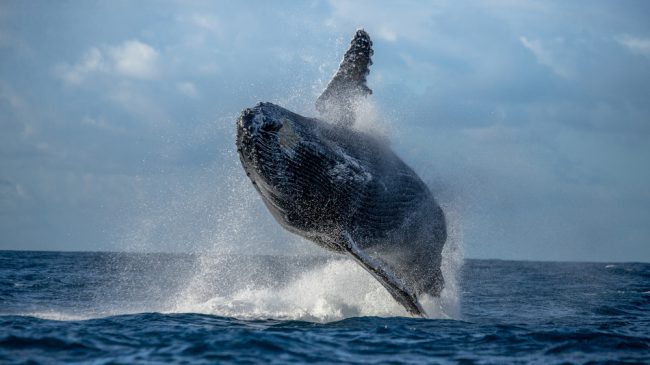
Wow, this is so interesting. I loved the songs you shared there. Some of the sounds are really sad. And it must really be awful to watch the killer whale weaken the mother to get to her young. Sigh.
I want to learn how to dive before I finish medical school. I want to dive during my first vacation. How long does it usually take to learn? Are there any books that would suggest and where can I purchase it? Thanks
Hi Crystal,
Thank you for your great comment and questions.
I’m glad you loved the Humpback Whales songs and yes some may sound sad but it’s there way of communicating. Sounds like a great plan… learn to dive before you finish medical school. It usually takes 3-4 days to get certified as an Open Water diver and I suggest going online to PADI’s website and check out their eLearning. The eLearning covers the theory material and you have a year to complete and can do at home. When you successfully pass the exam which you do online, you can then select the dive shop you want to finish the course with. The dive shop will set you up with one of their professional dive instructors and when you meet you do all your actual training, that is to get familiar with your dive gear, learn your dive skills in shallow water or in their pool and then you do 4 Open Water dives under the guidance of your instructor demonstrating what you learned.
There is really no need to purchase the hard copy of the materials unless you want it. The hard copy you can get from Padi’s website as well.
Here is an article for you to read for more information https://joyofscubadiving.com/b…
I hope you enjoy reading it and please let me know if you have any questions.
Kind Regards
Monica
These are cool facts, especially the fact about barnacles. I did not know that they could have up to 1000 lbs of the animals on them. That is quite a lot.
I do have a question though. Do barnacles have any negative downside for humpback whales? I look forward to hearing your answer. Thank you for sharing and I hope you have a great day!
Hi Alex,
Thank you for your great comment and question.
No, there are no proven negative downsides for humpback whales according to scientists who study them. There have been speculation that when the whales breach they might be trying to remove the barnacles… but that has not been proven and breaching seems to be a way of communication.
Kind Regards,
Monica
Great site. I love to dive myself but have never been to the Truk Islands, nor have I seen one of these whales.
Are you ever fearful being in the water with them? How many can I expect to see on one of these trips? Never have been there and would love to go. Great information.
Hi Bobby,
I’m glad you enjoyed reading my article, thank you! Humpback whales are very gentle. I’m never fearful of them and they are filter feeders and not interested in humans as a meal. If you go to Silver Banks during their migration, you can see a good number of them there. I hope you get an opportunity to make the trip.
Regards,
Monica
I LOVE to dive, but never had a chance to visit such an exotic destination like Turks and Caicos island. I hope that will change one day.
It must be a great experience to swim with these giants.
After reading some of the comments below an article, you mentioned It usually takes only 3-4 days to get certified as an Open Water diver. I thought it takes much longer.
There is actually one thing that is confusing to me! What means snorkelling? What is the difference between divers and snorkellers?
Great article and great website about Scuba diving.
Miroslav
Hi Miroslav,
Thank you for your great comment and question.
The entry-level Open Water Diver Certification only takes 3-4 days. It doesn’t take long at all. There is the theory part (eLearning) that can be taken on PADI’s website and done online and you are given a year to complete. You can do this at home or anywhere there is internet and computer. If you decide to do the theory with a dive shop and go for the manual, you get to spend time with your professional dive instructor who goes over the theory part with you. The theory is detailed and fun and most people do this in 1 or 2 days and the rest of the training is done in confined water where you learn how to use your dive gear and then go out to open water to do 4 open water dives with your instructor performing the skills you learned in confined water. This can be done in 1 or 2 days depending on your comfort level.
Snorkelling is swimming mostly at the surface of the water using a mask and a snorkel. You can inhale and exhale thru a snorkel as long as you swim at the surface. Scuba diving allows you to breathe and remain longer underwater using proper dive equipment.
I hope this helps!
Monica
Cool. Yes, it helped. Thank you for your answer! You learn something new every day!
Have a great day!
Hi Miroslav,
You’re welcome!
Thank you and you too, have an AWESOME day! I’m glad I was able to help Miroslav.
Kind Regards,
Monica
Have you been dive with Whale shark? If you can visit here in our place Cebu Philippines
You can dive with this gentle shark. In our place there are eighteen to twenty five whale sharks
In our diving sport area. Most of the tourist with swim with snorkel with them or go with scuba diving. By the way I’m An advance scuba diver. Padi Certified
Hi Bong,
I have been to many places but sadly not yet to Cebu, Philippines. It’s on my To Do List for sure. I wrote about diving in the Philippines https://joyofscubadiving.com/5…
and in there I mention the gentle whale sharks. I’m happy to hear you are a PADI Advanced diver… isn’t diving fun? I lived in Turks and Caicos Islands for a few years, I was able to dive and snorkel with one and also in Florida. They’re so beautiful.
What a feeling that must be to see so many whale sharks… Ummm I might have to change my plans instead of going to Kona, Hawaii, I could do the trip to Cebu.
Regards,
Monica